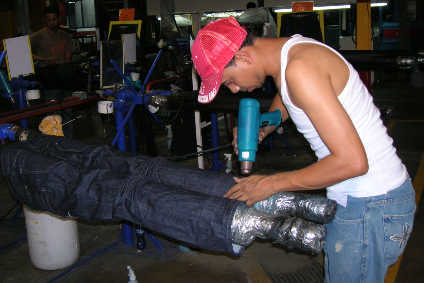
The Dominican Republic is letting a key provision to bolster its US exports run into expiration, deepening a 12-year rout that has seen its apparel sales to the world’s biggest market halve, observers say.
“I have not heard of any initiatives to extend the EIAP,” an official at the United States Trade Representative Office (USTR) told just-style, requesting anonymity. The source adds the country’s trade officials “know their priorities very well” and are not showing enough interest to place textiles and apparel at the top of the list.
The Dominican Republic Earned Import Allowance Program (EIAP) is set to expire on 31 December after running for a decade.
The scheme allowed Dominican suppliers so send key clothing categories, including woven cotton bottoms, to the US without paying duties. Due to its imminent expiry and rising competition from Asian rivals and neighbouring Haiti, the programme has been unravelling, with woven cotton bottom shipments falling 57% by value and 80% by volume in 2017.
Falling exports
The US official said Dominican exports to the US have been a steep decline for a few years and could decline further in coming months.

US Tariffs are shifting - will you react or anticipate?
Don’t let policy changes catch you off guard. Stay proactive with real-time data and expert analysis.
By GlobalDataSo far this year, however, exports are up 2.3% to $442m after falling 6.8% to $743m in 2017, according to data from the Department of Commerce’s Office of Textiles and Apparel (OTEXA). Last year’s decline contrasts with a 2.4% jump in clothing shipments for the seven nations making up the DR-CAFTA trade bloc, led by Honduras, Guatemala and Nicaragua.
However, not everyone agrees the island nation is dragging its feet on fashion exports.
David Cortes, owner of Texaco and Coca Cola uniform maker Calidad y Tiempo, says the National Council of Free Zones (CNZFE) is working to extend the EIAP, adding that he expects the scheme will survive.
“The council is making an effort to maintain the EIAP and they are working to open new export opportunities with Spain and many other countries to maintain the same export volumes we have now,” says Cortes, a former president of apparel trade lobby Aditex. “I don’t think the EIAP will shut down because the US wants to maintain its supplier mix [under DR-CAFTA] and does not want any more immigrants to come from job losses here.”
Cortes rejects views that the country’s exports have collapsed, noting they are “exaggerated” and that exports will likely remain flat this year.
Diversification hurts apparel
Whatever happens, the country’s apparel industry has withered in recent years, concedes Joan Juliá Calac, president at trade association Aditex, adding that foreign shipments are partly to blame.
“Free zone exports have declined a lot,” Calac claims. “Since China’s market opened in 2005, they have fallen to account for 20% to 30% of all exports, [down] from 80% then. Many factories have closed.”
Calac says the $100m local apparel industry has also dwindled amid a flood of sub-valued Asian imports and growing used-clothing trade.
Government efforts to diversify the export mix to include medical devices and new call centres have come at the expense of the apparel industry, according to Calac.
“We have not really advanced,” he said of the country’s overall status. “We have gotten poorer.”



